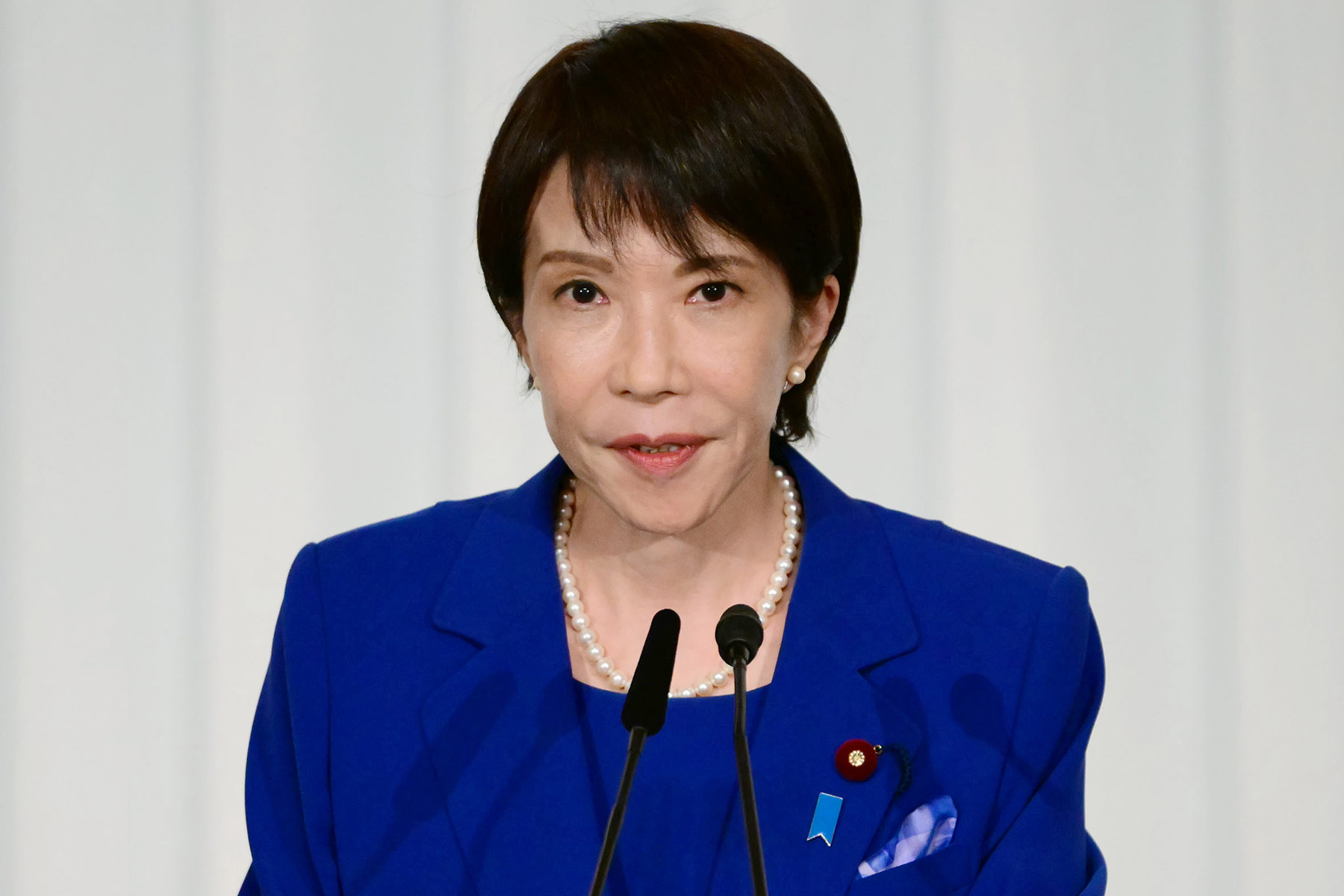
Japan’s ruling Liberal Democratic Party signed a coalition deal with the Japan Innovation Party, setting up Sanae Takaichi to become the country’s first female prime minister.
LDP President Takaichi and Hirofumi Yoshimura, co-leader of the JIP, known as Ishin, signed the coalition agreement on Monday evening.
Combined, the LDP and Ishin hold 231 seats in the lower house of parliament. While that is two seats shy of a majority, divisions between opposition parties mean Takaichi is almost certain to win a parliamentary vote on Tuesday to decide the prime minister.
Talks between the LDP and Ishin intensified in recent days. Ishin, the third-largest party in the lower house, has sought an agreement from the LDP on a temporary reduction of the sales tax on food, stricter rules on political funding and a reduction in the number of parliamentary lawmakers. Ishin’s other policy objectives include reforming Japan’s social welfare system to lower the burden on working-age people.
A new coalition would give the LDP a more closely aligned partner on many policies compared with its former ally, the centrist Komeito party. Komeito bolted from the coalition earlier this month. Since then, Takaichi has scrambled to find alternative sources of support, which became more essential after the LDP lost seats in a lower house election last year and an upper house election this year.
ALSO READ: Japan's LDP, Ishin agree to form coalition government, Kyodo says
While Takaichi is a staunch conservative on social issues, including opposition to allowing women to become emperor, her views on the economy are similar to former Prime Minister Shinzo Abe’s platform known as “Abenomics.” She has long advocated for government spending to boost Japan’s economic growth rate and criticized the BOJ for tightening policy.
During her campaign for the LDP leadership she took a more moderate stance, saying she doesn’t dispute the need for fiscal consolidation and would leave the specifics of monetary policy to the BOJ, but the yen has weakened and stocks have gained since her victory due to expectations of pump-priming and pressure on the central bank.
The slide in the yen may exacerbate inflation, a top concern among voters, creating a dilemma for Takaichi if she intends to reprise a policy course that’s in line with Abenomics.
On issues such as security, foreign policy, and energy, the LDP and Ishin are largely aligned. Both support Japan’s security alliance with the US and want Japan to have a strong military, as well as better economic security. The parties are also in favor of bringing back more nuclear power into the nation’s energy mix after most nuclear plants were closed following the 2011 meltdown and radiation leak at the Fukushima Daiichi plant.
Both the LDP and Ishin want more controls on foreign investment in Japan and the fast-growing presence of foreigners, which became hot button issues during the upper house election this year and contributed to the rise of the populist right-wing Sanseito party.
ALSO READ: Japan's ruling, opposition parties agree to pick new PM on Oct 21
There’s no guarantee that the new coalition will be stable. Some Ishin lawmakers have expressed concern about the LDP’s ability to pursue its reform agenda with the long-dominant LDP.
“The LDP has agreed to reduce the number of parliamentary seats,” Yoshimura said Monday before he signed the deal with Takaichi, characterizing that part of the deal as an absolute must.
As for Ishin’s insistence on tighter rules for political donations, the two parties set a timeline for an agreement in their talks, co-leader Fumitake Fujita said in a press conference Monday.
“Although the matter wasn’t resolved, the two sides shared a common understanding and reached an agreement to reach a compromise by the end of Takaichi’s term as LDP president” regarding the abolition of corporate donations, Fujita said ahead of the signing of the agreement. Takaichi’s term is scheduled to end in September 2027.
READ MORE: Japan opposition leaders to discuss uniting behind Tamaki for PM
The issue of corporate donations proved to be the breaking point for the LDP’s previous long-running coalition with Komeito.
“The focus should be on donations from corporations and organizations: the issue of money and politics, but the focus has shifted to reducing the number of seats,” Komeito’s leader Tetsuo Saito said Monday. “I wonder if this is a diversion from what the public cares about most right now.”
The new coalition will still also need support from other parties to pass key legislation such as the national budget, another factor that could create tension over policy compromises.
And unlike Komeito, Ishin has struggled to find support outside of the region around Osaka, known as Kansai. Without that additional national support, a change in the coalition could weigh on votes for the LDP in future national elections and potentially create friction between Ishin and the LDP on how to coordinate candidates in Kansai.


